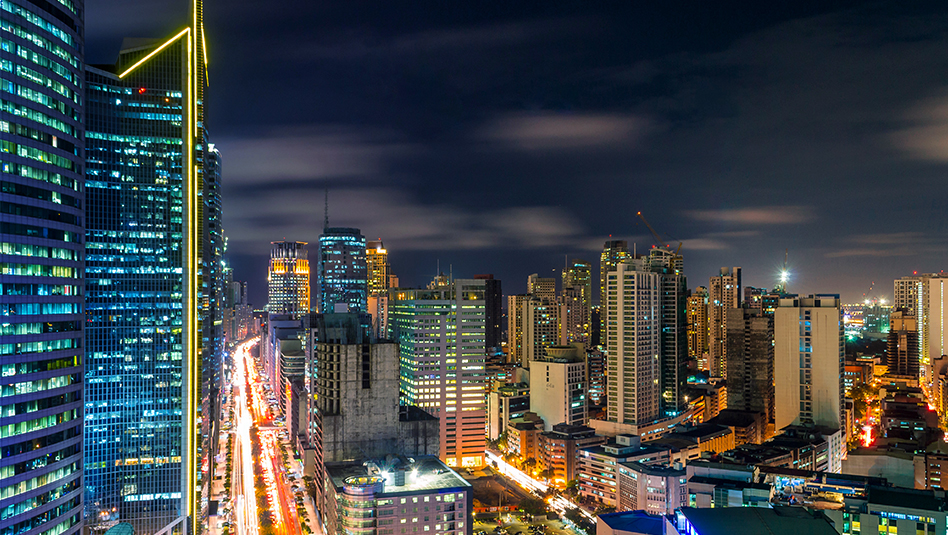Here’s what will drive the Philippine economy
How is the Philippine economy doing today? Thankfully, there is a silver lining despite all the impending risks. Learn what drives the Philippine economy here.

With the gross domestic product (GDP) growth rate for 2023 ending at 5.6%, the Philippines is still among the best-performing economies in Asia. That is welcome news, even if the growth is still below the government’s target.
While expected and unforeseen risks remain, there are numerous growth drivers that will stimulate the Philippine economy in 2024.
Resurgent private consumption. Just as in previous years, the GDP’s main driver is still consumption. The latest data from the Philippine Statistics Authority show that the percentage share of consumption in GDP remains high at 76.6%, with a 5.6% year-on-year (YoY) growth for the last quarter of 2023.
Private consumption remained robust last year, with high spending recorded in restaurants and hotels, transport, and recreation, despite the high growth base in 2022, due to “revenge spending” after the lifting of the lockdowns.
This year, consumer spending is expected to continue driving economic growth, especially with the anticipated boost from different industries and sectors. This year, the government is also looking at managing elevated food prices by improving the resilience of agriculture, using strategic trade policies, and preventing anti-competitive practices in the market.
Boost in tourism and inflows of remittances. By December 2023, tourism had a staggering 5.1 million international visitor arrivals for the year. Currently, the Philippines is undergoing significant transformation, including the enhancement of infrastructure, streamlining of processes, and ensuring ease of travel for both domestic and international tourists.
The legislation for VAT refunds for non-resident tourists is expected to pass with ease this year and is expected to boost the country’s shopping tourism.
A torrent of inward remittances has also been reported in 2023, equating to around 10% of the Philippines’s GDP, with consistent growth from recent years up to 2023’s projected remittance of USD 40 billion, which fueled spending and consumption.
The country was even recognized as the Top 4th Country Recipient of Remittances in 2023. This is expected to grow to USD 42 billion in 2024, especially with the tourism sector continuing to rise.
Laid-out investments. Flourishing private sector and government investments have also led to an increasingly productive business and economic landscape.
National Economic Development Authority (NEDA) Secretary Arsenio Balisacan emphasized the importance of investment expansion to support employment security in the country. This is reflected in the increased labor participation rate as well as the decreasing unemployment and underemployment rates. This means more jobs, more income, and more spending.
In 2023, the Board of Investments (BOI) achieved a record high of PHP 1.3 trillion worth of approved investments, comprising mainly foreign investments focused on the renewable energy sector and telecommunication.
On top of these, the government continues to improve the ease of doing business in the country through digitalization and streamlining of government processes. The government also welcomes new legislation that opens public sector projects to foreign investors, in particular the Public Services Act. The Public-Private Partnership (PPP) projects likewise encourage investments.
Strong economic team. The Philippines started the year with the appointment of Finance Secretary Ralph Recto. In his first press conference, he reaffirmed his goal to improve tax efficiency this year, instead of imposing new consumer taxes.
This is supported by the Ease of Paying Taxes Act and other legislation that will support a solid fiscal foundation for the Philippines.
His leadership, with the help of other members of the economic team, opens possibilities. We await his reforms aimed at increasing government revenue, implementing fair taxes for all, and lowering debt through increased economic activity.
A silver lining for the country is on the horizon. By 2025, the World Bank expects the Philippines to achieve above-middle-income status. S&P Global also foresees our country becoming one of the one-trillion-dollar economies of the Asia-Pacific.
The potential is there. Despite the gloom in the news, a Philippine economy that surpasses and grows is possible.
(Bookmark and visit Metrobank Wealth Insights at www.wealthinsights.ph daily for investment insights and ideas. If you are a Metrobank client, please get in touch with your relationship manager or investment specialist for assistance in accessing exclusive content. Not a client yet? Please sign up here so you can begin your wealth journey with us.)
HANS NIGEL P. MARCELO is an intern at the Institutional Investors Coverage Division of Metrobank, taking on roles in relationship management and research and business analytics. He is currently taking his undergraduate studies at the De La Salle University – Manila.
MARIAN MONETTE FLORENDO is a Research and Business Analytics Officer of the Financial Markets Sector at Metrobank. She provides macroeconomic research for the bank. Her academic background is in Mathematics and Economics. She loves solving puzzles and watching mystery movies.







 DOWNLOAD
DOWNLOAD




 By Hans Nigel Marcelo and Marian Florendo
By Hans Nigel Marcelo and Marian Florendo